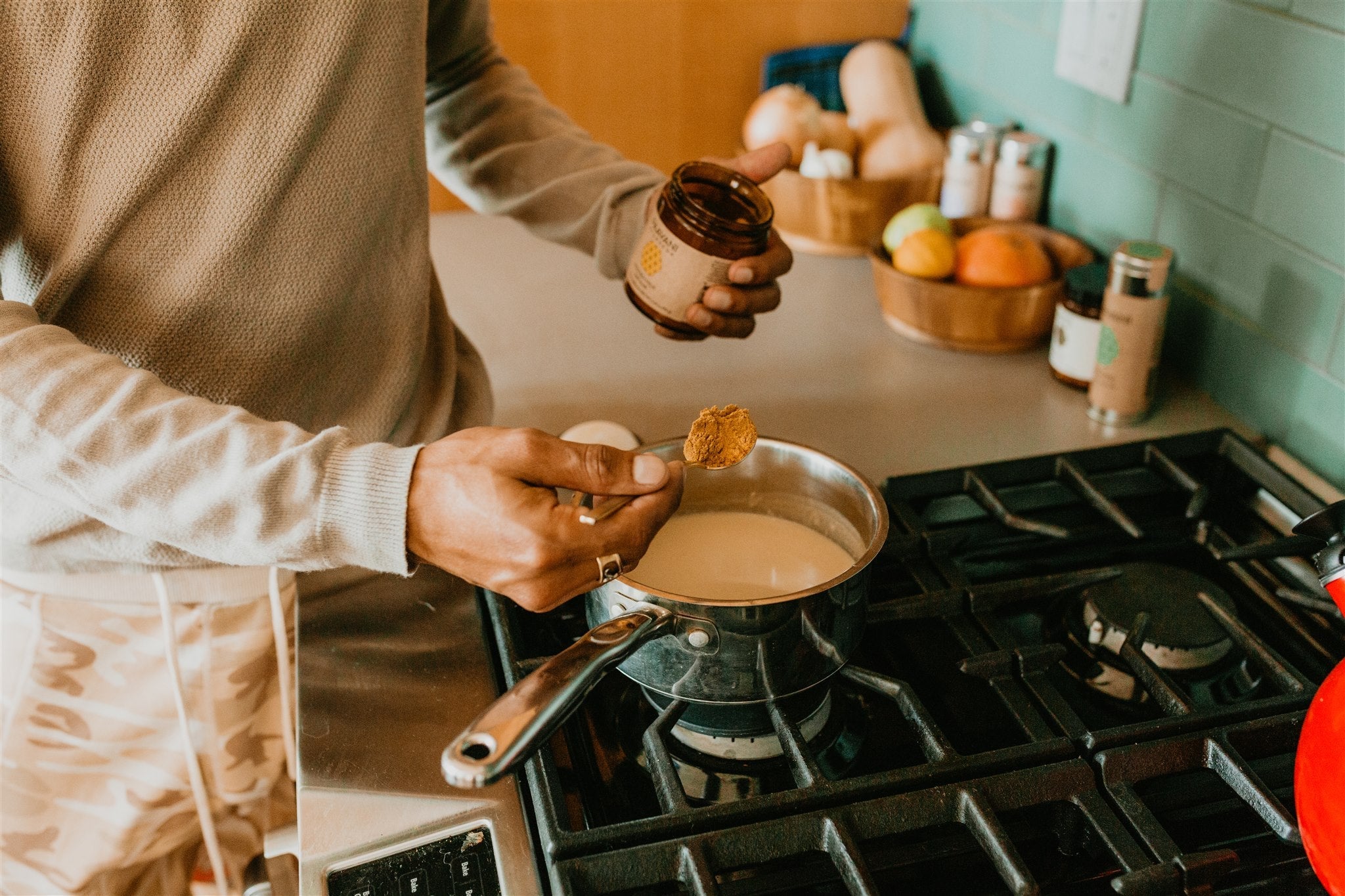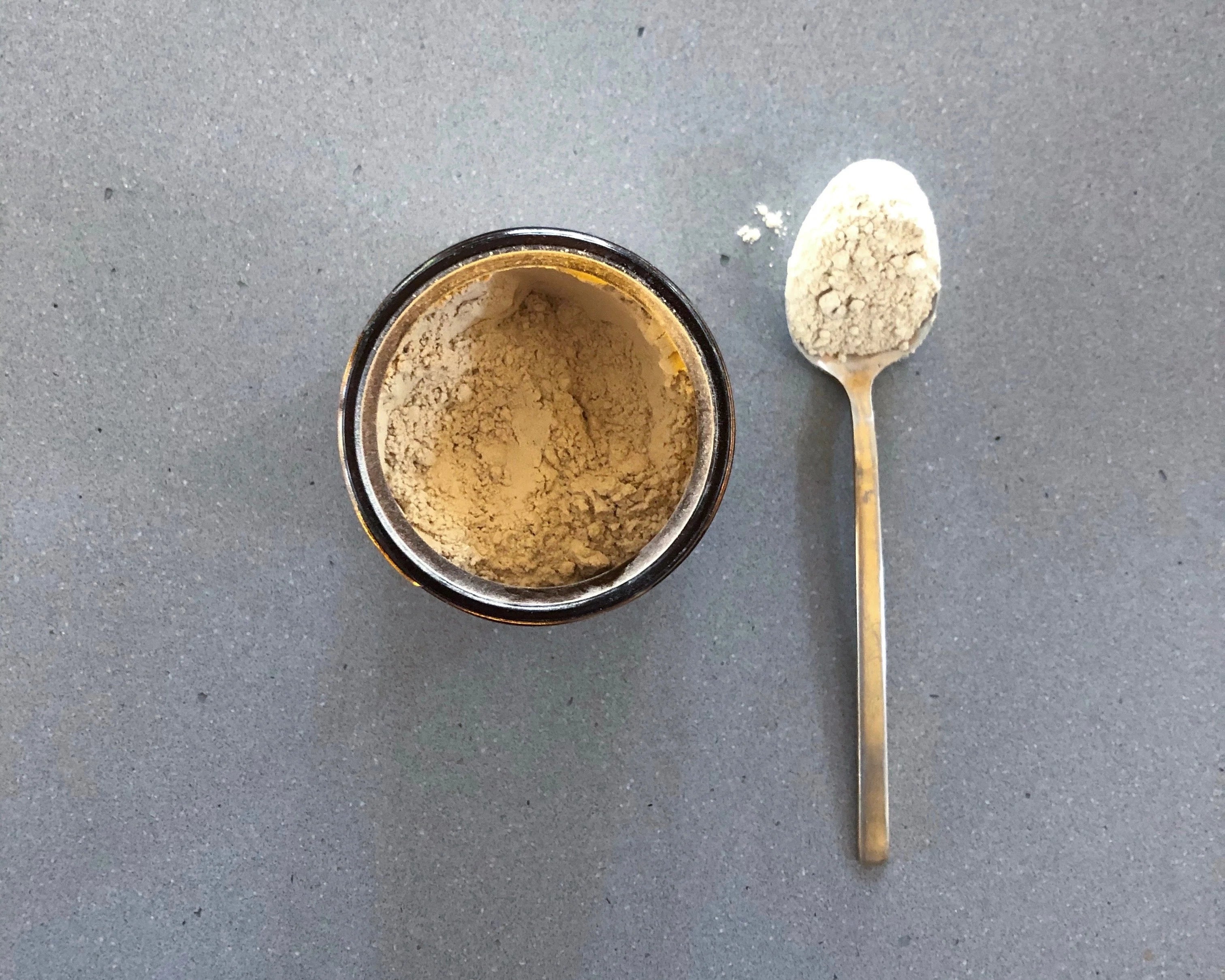
Ayurvedic Breakfast Recipes for Your Dosha: Begin Your Day with Health & Wellness
At this point, we all have gotten the memo that convenience foods negatively impact our overall health. From the Ayurvedic perspective, they are also devoid of prana (life force energy), diminish our connection to nature as well as the culinary traditions handed down by our ancestors. Cooking and preparing meals consisting of whole and unprocessed foods, that your great grandmother would recognize, is taking a stand for your health and a stand against the fast-food culture that has a stranglehold on not just America but the whole world. We encourage you to slow down and reclaim the art of preparing, making and consuming food! In Ayurveda, this process is called food sadhana.
We cannot think of a better place to start the practice of food sadhana than with the first meal of the day- breakfast. Eating a healthy Ayurvedic breakfast will stoke your agni or digestive fire. When your agni is strong, you are able to digest, assimilate and absorb the vital nutrients in your food and create healthy bodily tissues. This, in turn, will maintain your vitality and immunity, known in Ayurveda as ojas. When you are abundant in ojas, you are better able to withstand stress and maintain a healthy, radiant glow to your skin.
Below are some delicious Ayurvedic breakfast recipes tailored for each dosha- vata, pitta and kapha. You might notice that each recipe is a warm cooked meal because Ayurveda understands that cold, raw foods can be difficult to digest when agni is low. If you are in balance and not experiencing vikruti, then we recommend you pick recipes according to the current season. However, if you are experiencing vikruti, please choose the recipe(s) that will balance your dosha and digestive tract. Not sure what your dosha is?
AYURVEDIC BREAKFAST RECIPES FOR YOUR DOSHA
VATA DOSHA BREAKFAST RECIPES:
Best during vata season (fall & winter) or if one is experiencing excess vata

SPICED OATMEAL
Ingredients:
⅔ cup dry oats
2 cups of water
¼ teaspoon salt
1 heaping tablespoon ghee
¼ cup dates
¼ teaspoon cardamom powder*
¼ teaspoon cinnamon powder*
dash of nutmeg powder*
optional: ½ teaspoon ashwagandha powder
*you can also substitute all of the spices for ½ teaspoon of our Golden Milk spice blend
Directions:
Place oats, dates, salt, ghee, and water in a small saucepan and bring to a boil. Reduce heat to low and add the cardamom, cinnamon, nutmeg and ashwagandha (if using). Cook on low until oats are cooked entirely, anywhere between 5-10 minutes.
Add a splash of almond milk or raw whole cow’s milk after the oats have cooked through to give the oats a nice creamy texture. If desired, add a bit of maple syrup to the oats; however, the oatmeal should already have a nice sweet taste thanks to the dates.
BAKED SWEET POTATO
Ingredients:
1 medium-sized sweet potato
2 tablespoons ghee
⅛ teaspoon salt
tin foil square
¼ teaspoon cardamom powder*
¼ teaspoon cinnamon powder*
1 dash of nutmeg*
1 handful chopped roasted almonds
*you can also substitute all of the spices for ½ teaspoon of our Golden Milk spice blend.
Directions:
Preheat your oven to 400 degrees Fahrenheit. Wash the sweet potato and dry completely. With a fork or sharp knife, poke holes on each side of the sweet potato. Use 1 tablespoon of ghee to cover the sweet potato’s skin then sprinkle with salt. Wrap the sweet potato in tin foil and place in the center rack of the oven. Bake for 30-35 minutes. The sweet potato is done when you can pierce it with a fork and it feels soft through the center. Once the sweet potato is done baking, take it out of the foil wrap and slice it open. Add the remaining ghee and sprinkle with spices and chopped almonds.
PITTA DOSHA BREAKFAST RECIPES:
Best during pitta season (late spring & summer) or if one is experiencing excess pitta
Rice Pudding
-inspired by Ayurvedic Specialist & Chef, Amadea Morningstar
Ingredients:
1 cup cooked white basmati rice
1 cup of coconut milk
¼ cup raisins
1 tablespoon coconut oil or ghee
½ teaspoon cardamom powder*
½ teaspoon coriander powder*
optional: add ½ teaspoon of shatavari powder
*you can also substitute all of the spices for 1 teaspoon of our Golden Milk spice blend
Directions:
Place all of the ingredients into a small saucepan and mix well. Cook on medium to low heat, until hot, about 5 minutes.

Ayurvedic Egg Breakfast
Ingredients:
3 egg whites
⅛ cup raw cow’s milk
1 tablespoon ghee or coconut oil
1 cup packed fresh spinach leaves
¼ teaspoon turmeric
¼ teaspoon coriander seeds
¼ teaspoon cumin seeds
dash of salt & pepper
* you can also substitute the turmeric, coriander and cumin with our Pitta Spice Blend.
Directions:
Combine the egg whites, milk and turmeric in a mixing bowl and whisk until combined. In a skillet, heat ½ teaspoon ghee and add the coriander and cumin seeds. Cook on low until you hear the seeds popping then add the spinach leaves and saute. Once the spinach is wilted, remove from the skillet onto a plate. Add the remaining ghee to the skillet and pour in the egg white mixture. Allow the eggs to cook without stirring until the mixture begins to set around the edges. Using a spatula, gently stir the eggs to make a scramble. When eggs are the desired consistency, remove from heat and add to sauteed spinach. Finish with a dash of salt and pepper.
Kapha Dosha Breakfast Recipes:
Best during kapha season (late winter & spring) or if one is experiencing excess kapha

Simple Homemade Granola
-inspired by Ayurvedic Specialist & Chef, Amadea Morningstar
Ingredients:
4 cups rolled oats
1 cup oat bran
1 cup raw sunflower seeds, ground
½ cup raisins
½ cup dried cranberries
3 tablespoons grapeseed oil
¼ cup apple concentrate
1 tablespoon cinnamon powder*
1 tablespoon cardamom powder*
1 teaspoon dry ginger powder*
1 teaspoon clove powder*
*you can also substitute all of the above spices for 2 ⅓ tablespoons of our Golden Milk spice blend or Kapha Spice Blend.
Directions:
Preheat your oven to 350 degrees. Combine the dry ingredients together in a bowl and combine the grapeseed oil and apple concentrate in a separate bowl. Pour the liquid mixture over the dry ingredients and mix well to combine. Spread the mixture into 2 large ungreased baking dishes. Bake for 30 minutes or until granola is golden brown and fragrant. Once cool, combine ½ cup to 1 cup of granola with room-temperature rice milk to make a healthy, light breakfast cereal. Store the rest in an airtight container for the rest of the week.
Broiled Grapefruit
Ingredients:
1 whole grapefruit
½ teaspoon cinnamon powder
¼ teaspoon ginger powder
dash of chili flakes
*you can also substitute all of the above spices for 3/4 teaspoon of our Kapha Spice Blend &/or Golden Milk.
Directions:
Set your oven to broil. Slice the grapefruit in half and place on a cookie sheet lined with parchment paper. Broil the grapefruit for 5-6 minutes or until there is a nice golden, caramel color forming. Take out of the oven and place in serving dish. Sprinkle grapefruit with spices.
To learn more about ayurvedic breakfast or nutrition a great book to start with is Amadea Morningstar’s The Ayurvedic Cookbook. We also recommend Talya Lutzker’s The Ayurvedic Vegan Kitchen: Finding Harmony Through Food and Sahara Rose Ketabi’s Eat Feel Fresh: A Contemporary, Plant Based Ayurvedic Cookbook.
Organic Teas, Tonics, Spice Blends & Ghee
Ayurveda is traditional Indian medicine that holistically considers the mind, body and soul when treating symptoms and diseases. It teaches that in order to feel your best, one must go about eating and living in a manner tailored to your individual constitution. Ayurveda recognizes three distinct doshas (a combination of elements present in each person).
Eggs photo by Monserrat Soldú: https://www.pexels.com/photo/selective-focus-photo-of-three-eggs-on-tray-600615/
Granola photo by Polina Tankilevitch: https://www.pexels.com/photo/photo-of-granola-seeds-with-raisins-3872382/





4 comments
@Ketki raval – Thank you kindly for your comment. We’re delighted to hear that you found the recipes helpful. Wishing you a nourishing and balanced start to your day.
PAAVANI Ayurveda
@Martin – great question!
Ayurveda on Milk and Food Combinations:
Milk is considered heavy, cooling and nourishing but can be difficult to digest when combined with certain foods (like sour fruits, salty or salty foods, fish or excessive protein). This is because milk’s qualities can clash with other food energies, potentially leading to ama (toxins or undigested residue) or digestive imbalance, especially in people with sensitive digestion or aggravated doshas.
Common incompatible combinations with raw milk include: sour fruits (like citrus), salty foods, fish and some meats.
When milk is heated or cooked, it undergoes a transformation—its heavy and cooling qualities are softened, and it becomes easier to digest.
In Ayurveda, milk that is boiled or cooked is generally considered more digestible and less likely to cause digestive issues when combined with other ingredients.
For example, milk combined with eggs in baked goods or custards, or milk cooked with grains (like rice pudding), is usually fine because the cooking process balances the qualities.
Also, baking typically involves heat, which changes the properties of both milk and the combined foods, reducing incompatibility concerns.
We hope this helps!
PAAVANI Ayurveda
Thanks for Ayurvedic recepie.
Ketki raval
Thank you for the great recipes! I have been wondering about Ayurveda’s perspective on combining milk with for instance eggs in baking and cooking, as I believe the general recommendation is that milk should not be combined with most other foods. But is it so that this does not apply when milk is used in cooking? Thanks in advance, Martin
Martin
Leave a comment
This site is protected by hCaptcha and the hCaptcha Privacy Policy and Terms of Service apply.